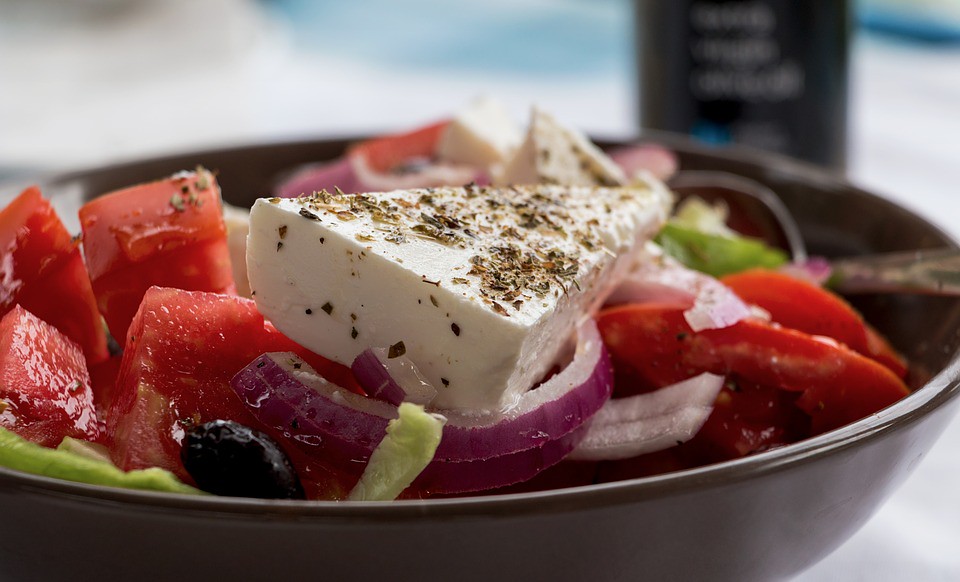Will Traditional Greek Food Ever Die?

Our understanding of the ancient kitchen is mainly based on evidence from the town homes in Pompeii. Its dominant feature is the hearth, which in more primitive cultures was at ground level but later on ended up being a raised platform of masonry at a practical height. In one house the platform extends from wall to wall and has 4 arches for storage of charcoal beneath. These have actually often been translated as ovens but it is clear that the oven stood independently from the hearth food in greece today and was typically outside, particularly as it was fired with wood.
The secret to this raised platform is that charcoal, without excessive fumes, was used indoors. An arena was put over the coals to take the cooking pots. Experiments I have done using charcoal on a masonry platform built for the purpose have actually proved very illuminating. We all know how to barbecue: the strategy is very easy. However, the Romans would not have squandered a lot of the heat generated as we do. A charcoal fire has an extended life well beyond usual barbecue needs. When the ashes are well charred and apparently exhausted, the heat produced and kept in the platform can keep a simmer for a prolonged duration while a fresh fire is begun, moving from one side to the other, for frying and bringing to the boil. Utilizing this technique all the basic methods of cooking for which we now utilize a gas or electric bob can be carried out. The technique is mostly based on comprehending the quality of heat created and involves an excellent deal of waiting around for the fire to be all set for a particular cooking approach.
Many recipes have been recreated utilizing genuine ceramic pots and metal cooking vessels. Bronze pots have actually been found in situ in your home of the Vettii in Pompeii, and Roman soldiers have actually been discovered buried with their own personal bronze cooking pot. Less expensive earthenware vessels had a shorter life-span and were tough to keep clean as they were unglazed. In Apicius the cook frequently requires a brand-new pot, suggesting that residues from previous dishes might taint some foods. Lead vessels existed, strange as that might seem, and appear to have actually been utilized when simplifying should (grape juice) into syrups for sweetening and colouring. Pliny the Elder actually tells us that they liked the particular flavour imparted by lead!
Roman ovens were dome-shaped and might be built into an external wall. Larger ovens might be free-standing, made of brick and formed like a beehive. Those found at Pompeii are sophisticated structures that could hold numerous loaves simultaneously. Ovens inside the cooking area were charcoal-fired and either free-standing or used on top of the hearth. The literary sources refer to this type of oven as either testum or clibanus. They were dome-shaped with a little hole in the top and a predicting flange that appears to have been used to hold the coals, and they were made from bronze, iron or a coarse earthenware. Archaeological finds reveal that large quantities of grog (sand, stone and damaged pot) were blended with the clay to allow it to hold up against the thermal shock of direct contact with the fire.
In use the testum is suspended over the fire until very hot, and then the hearth is cleaned up. Using equipment based on archaeological finds, I have discovered that a baking temperature level of 375-400 ° F (190-200 0C) is easily maintained, and I have produced some really effective bread and cakes. It is evident that these ovens were used at a domestic level for baking honey cheesecakes, which are best served warm.
Put on top of a dish of comparable product, testa might be used for cooking moist dishes such as meat or fish. The dish would stand directly on the hearth, with the testum over the food, and the coals would be pushed up versus the sides and on the flange simply as for baking. Apicius gives directions for just such a method when he tells the reader to prepare kidneys in a clibanus: see the dish for Barley Rolls for a discussion on alternative baking covers.
Some really advanced tools have actually been uncovered at Pompeii. It appears the Roman cook had access to such items as fish kettles, moulds in the shape of nursing pigs and hare, and portable braziers that might cook and keep dishes hot in the dining space. Other kitchen area furnishings consist of repaired stone pillars which functioned as the base for a wooden table and kitchen sinks, often supplied with hot water. In a bigger kitchen the common amphora stood against the wall to store wine and fish sauce. Big mortaria, suspended on tripods, were utilized to mix the various sauces. The Roman mortarium was a large shallow vessel with grit embedded in the clay to assist the split of spices. A mortar is necessary for recreating Greek and Roman food. Pounding and pureeing would have been a task for a routine family slave in an ancient cooking area and would have taken hours of effort. If you do not have a slave to hand, then I suggest you invest in a food mill simultaneously!